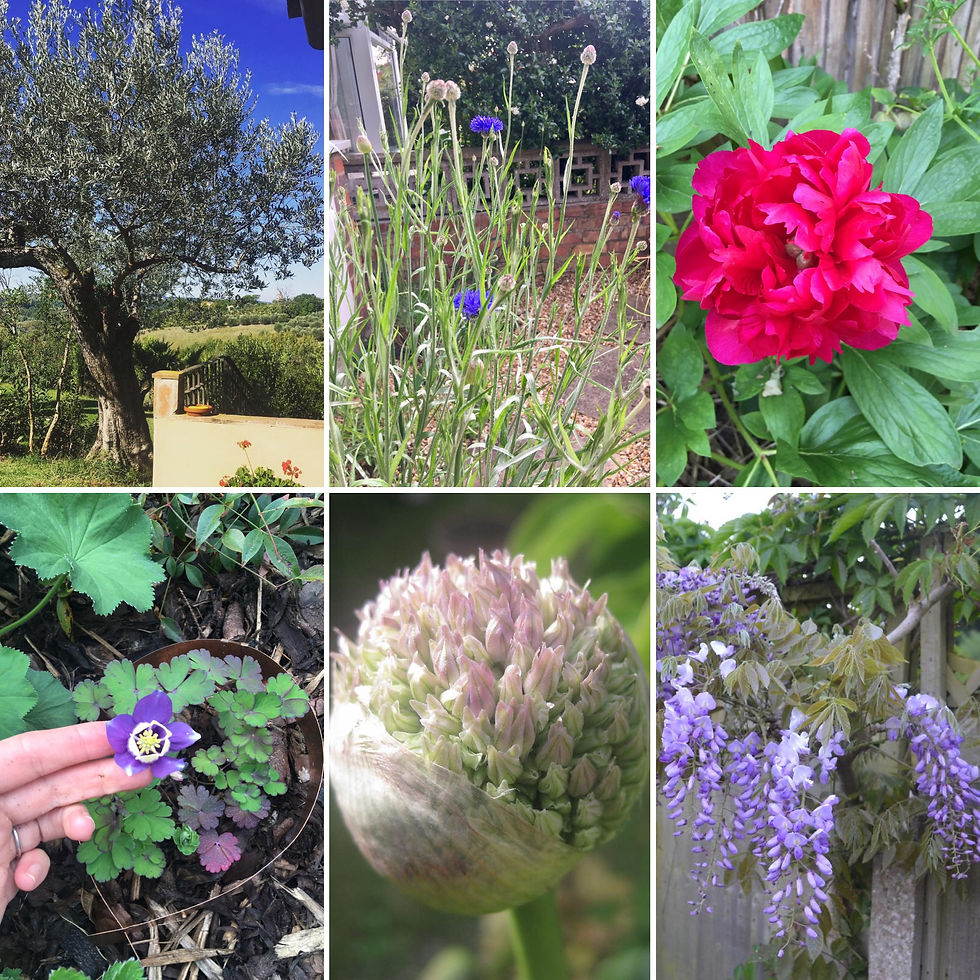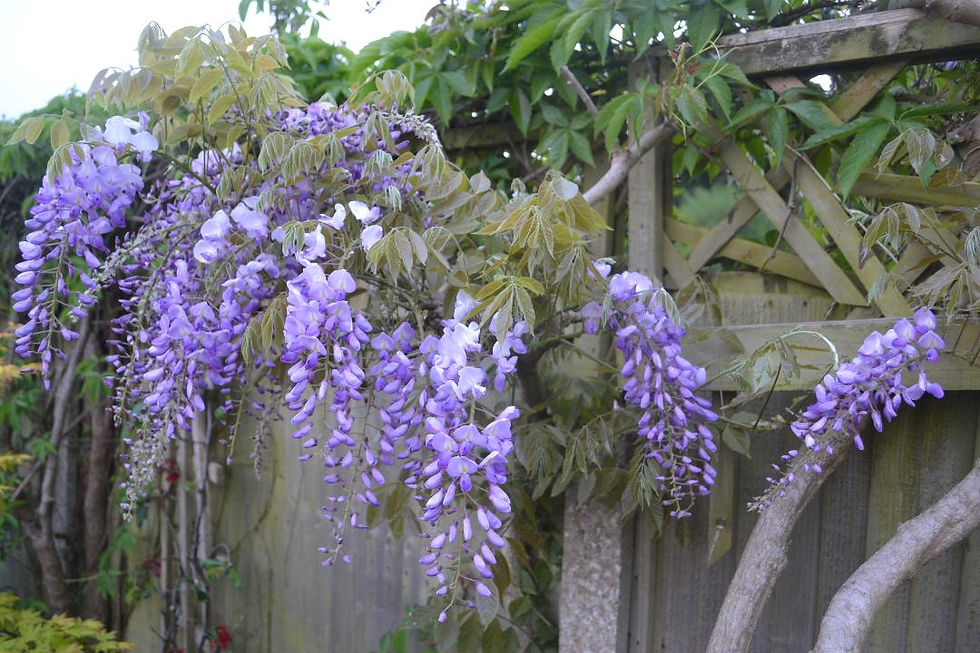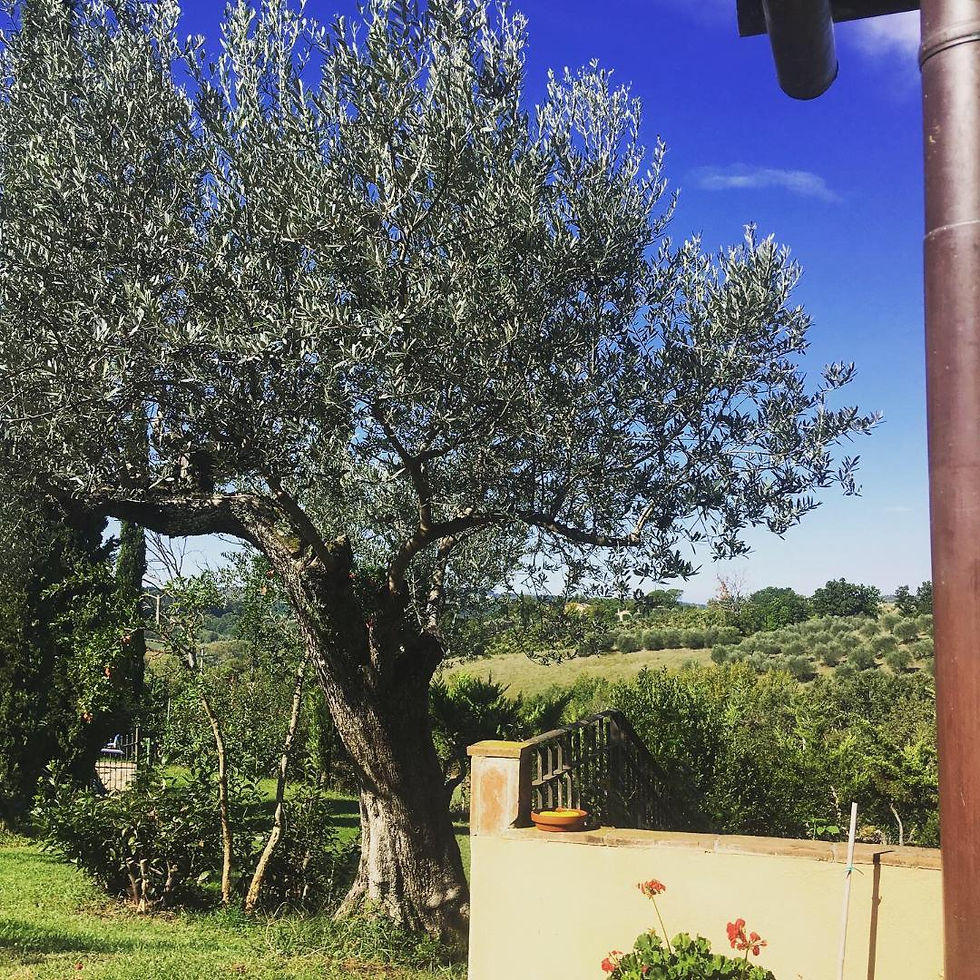Ever wondered how a shrub differs from a tree, or the difference between an annual and a perennial? Maybe you've been wondering what a biennial is? Gardening is full of words and terms that can sometimes confuse or intimidate us gardeners. Plants grow in lots of ways, and I for one like to know what type of plant I have on my hands, so I know how to treat it and what to expect. I thought a blog post discussing the differences might be in order, especially as spring is approaching and everyone likes to get planting.

Annuals
Annuals complete their life over one year, so they flower, set seed and die within a twelve-month period. Most likely, many of your favourite wild flowers will be annuals. They are usually easy to raise from seed and then self-seed quite freely. They often produce colourful flowers and are attractive to pollinators. They are therefore beneficial to gardeners when grown near fruit and vegetables. Annuals are best grown from seed, and if sown in succession, should offer a continuous display of colour from late spring onwards.
Examples: cornflowers, Californian poppies and sunflowers.

Biennials
These plants complete their life-span over two years, usually germinating and producing foliage in the first year, then flowering and setting seed in the second. They can be grown from seed, or you may choose to buy them as raised plants. Like annuals, they are often attractive to pollinators. Some short-lived perennials - such as columbines or Aquilegias (pictured below) - are treated as biennials.
Examples: Common foxgloves, Aquilegias and Lunaria annua – commonly known as Honesty – a plant with the distinctive flat and papery white seed heads in the autumn.

Perennials
Perennials refer to plants that live for more than two years. Technically, shrubs and trees could also be seen as perennials, but when gardeners talk about perennials, they are likely to be referring to groups of plants that are either herbaceous – whereby they die back in the autumn and then produce fresh grown the following spring – or evergreen – where they maintain their leaves throughout the year. Perennials are popular with gardeners because of the huge variety of colour, flowers and interest available. They rarely require much maintenance to perform well, and most produce very attractive flowers and foliage.
Examples of herbaceous perennials: peonies, delphiniums and salvias
Examples of evergreen perennials: hellebores, bergenias, heucheras

Shrubs
Shrubs are large, woody plants that can either be evergreen or deciduous – losing their leaves in the autumn to produce fresh growth the following spring. They can be distinguished from trees by the fact that they grow from multiple stems at ground level, rather than one leading stem that then goes onto form branches, as in the case of trees. Shrubs can be large and invasive, or small, neat and compact. In garden settings, shrubs are considered invaluable for creating year-round structure and often height in borders, as well as producing interest over multiple seasons. Depending on their growing habit, many can also be pruned into formal hedges, or trained along fences (see Wisteria below) and up arches.
Examples: Common box, dogwood and roses

Trees
You’ve probably heard of these - trees, much like shrubs, are woody plants, with one elongated stem that then diverges to form branches. They can be evergreen or deciduous, and are often attractive to wildlife. They are generally very tall, towering over other plants, but shorter, compact and dwarf cultivars have been bred for use in gardens. In borders, trees can provide shade and seasonal interest, especially those with leaves that change colour in the autumn, or produce attractive seed heads and fruits. Many trees also produce edible fruit too.
Examples: Oaks, birches, apple, pear and olive

Bulbs
When asked about bulb plants, most people would think of spring daffodils and tulips. But in truth many summer and autumn flowering plants fall into the bulb category too – including lilies, alliums, agapanthus and nerines. The bulb, which is planted under the soil surface, produces roots, leaves and flowers, and is essentially the storage facility for the plant. The bulb contains all the food the plant needs in dormancy to then produce fresh leaves and flowers for the following year.
Bulbous plants are mostly prized for their fantastic blooms and for being easy to grow. Gardeners will plant the bulbs in autumn or spring for dazzling displays the following year. Alternatively, you can plant shop-bought bulbs while they are flowering too.
It's worth mentioning that there are plants that grow from corms, rhizomes or tubers (such as Crocus, bearded Iris and Dahlias). Although not technically bulbs, the plants in these groups are treated in a very similar way.
Examples: daffodils, tulips, grape hyacinths, lilies, agapanthus, alliums

When I first began writing this, my aim was to create a short and simple post looking at the different plant categories, and how they differ from each other. After finishing I feel that each category could have it's own dedicated post! So I hope you have found it informative and helpful, and if you have any questions, please feel free to get in contact over instagram.
Thank you for reading and have a great week.
Comments